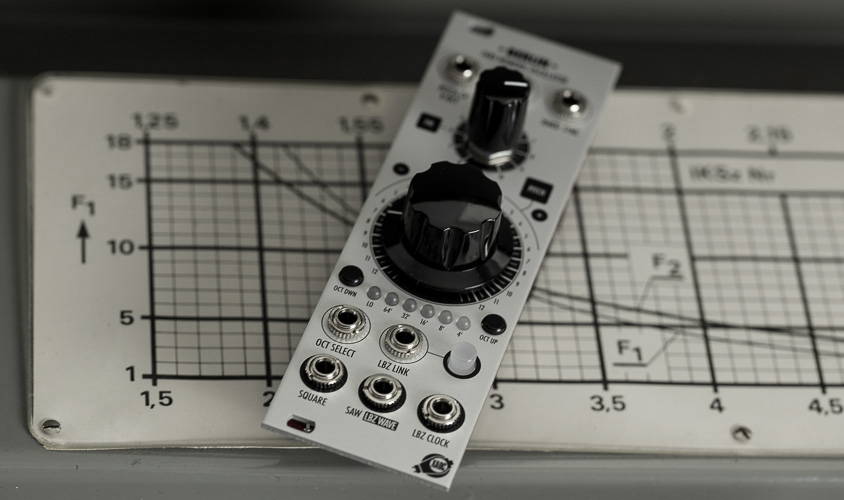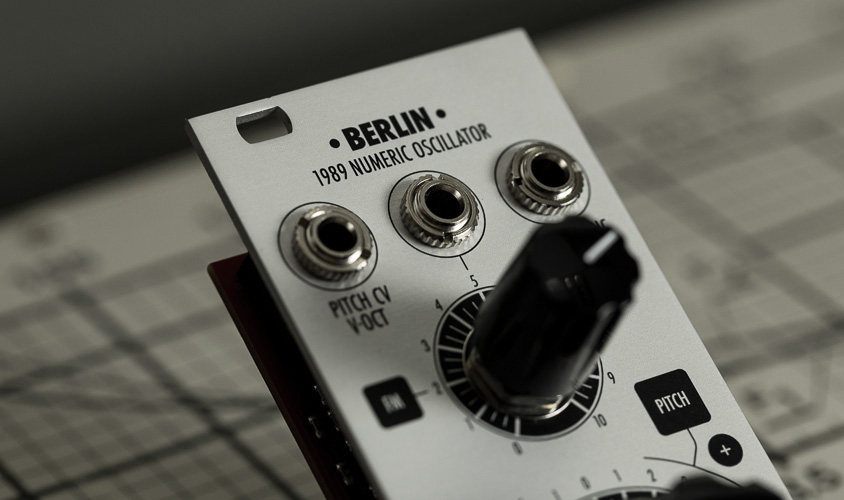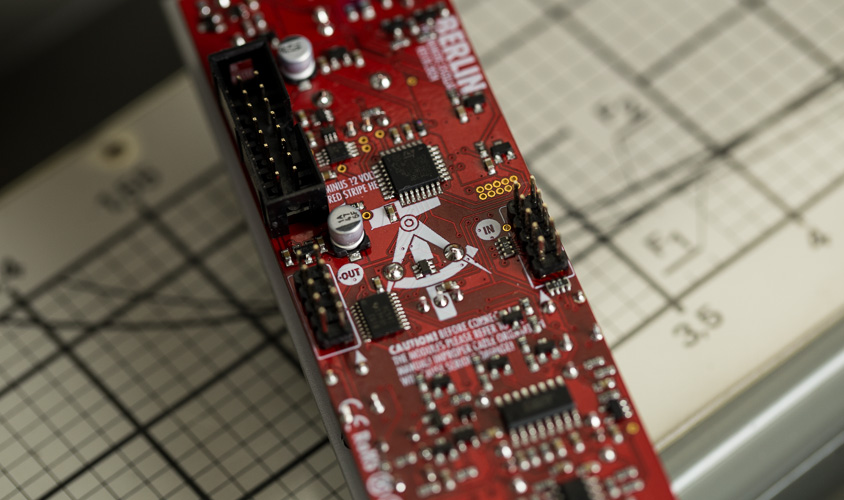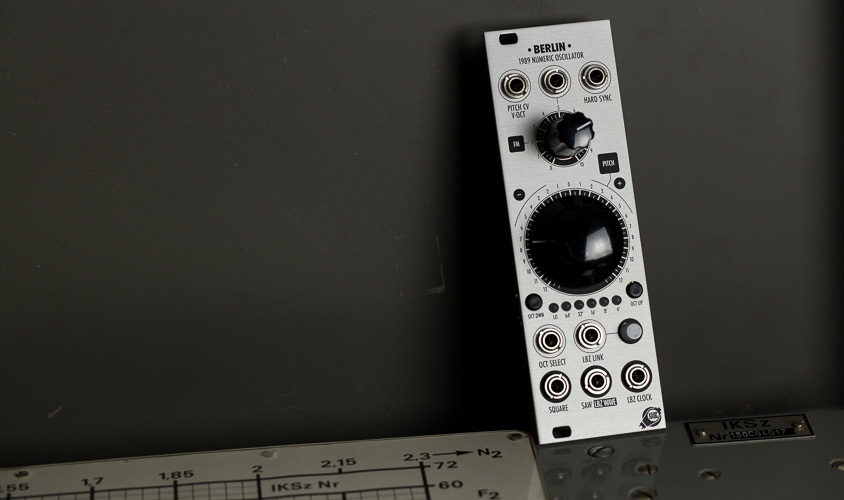Berlin
Berlin
Numeric Oscillator
Model of 1989
Resources
Description
On the surface, Xaoc Devices Berlin is a simple compact VCO offering square and saw waves with hard sync, FM input and octave switching. The most interesting part lies behind the panel and that is the Leibniz Binary Subsystem interface, namely LBZ out and LBZ in. The frontpanel LBZ LINK button and its corresponding gate input switch between the default saw wave and a signal that has been passed through any Leibniz module (or a combination of Leibniz modules) connected to Berlin. Add Xaoc Devices Jena for wave processing and the output is no longer a simple saw wave – you now have a vintage-style wavetable oscillator with a penchant for the experimental due to its open, hackable nature.
Berlin operates in a way similar to the classic PPG Wave and Fairlight CMI synths and employs a variable sample rate of an extremely widerange internal clock. As the sample rate changes with the oscillator frequency, Berlin’s internal square and saw waves exhibit no aliasing effect. The whole frequency range spans from 30 seconds in LFO mode up to 250 kHz (!) with the clock reaching an astounding 20 MHz. Add to that voltage control over all parameters and the result is a highly versatile module capable of creating a significantly diverse palette of unusual waveforms. To better understand the device and avoid common pitfalls, we strongly advise the user to read through the entire manual before using the module.
Features
- Wide-range VCO with LFO mode (over 20 octaves of tracking)
- Leibniz Binary Subsystem interface
- Extremely widerange clock source
- Manual and voltage control over all parameters (including octave switching and LBZ LINK!)
- Simultaneous Square and Saw/Leibniz wave outputs
- Extensive waveshaping potential when combined with Xaoc Devices Leibniz Subsystem
Technical details
- 8hp, 30mm deep (including the ribbon cable and bracket)
- Current draw: +40mA/-20mA
- Reverse power protection
Connectivity
Berlin connects to all modules compatible with the Leibniz Binary Subsystem: Drezno II, Lipsk, Gera, Jena, Erfurt, Poczdam, Rostock, Ostankino II, and Odessa.




